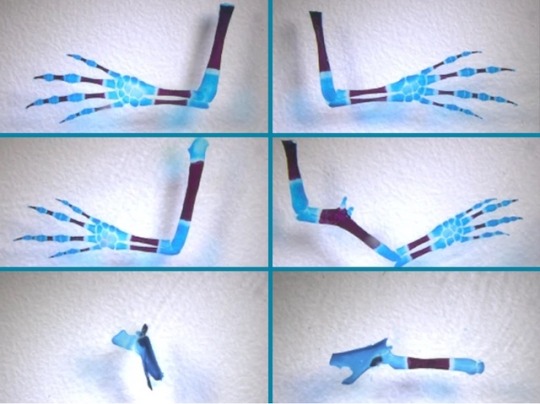I've had this acct for years now and I remember the Zola story from before that, that's how old I am. mdfermaint.epizy.com/about ||| Even though you can look up what you want about me, stalking me is not okay.
Don't wanna be here? Send us removal request.
Text

Where the desert meets the sea.
Photo by Johan Lolos
383 notes
·
View notes
Text
kesha - joyride (official video)
8K notes
·
View notes
Text

Right Foot Forward
If your toe got chopped off, you wouldn’t want a whole foot to grow back in its place. Neither would an axolotl, whose remarkable limb regeneration powers make this a more real possibility. Regenerating limbs retain their ‘proximodistal identity’ (ie. how far away they are from the body) thanks to genes that guide cells in the growing stump. Retinoic acid is known to regulate these genes, but how its levels are managed is unclear. Researchers hoping that axolotl biology could hold clues to improving human tissue repair discovered that the rate of retinoic acid breakdown is key. Reducing this breakdown led to structural errors, like regenerating the wrong limb segments (middle row), while fully blocking it caused regeneration to fail altogether (bottom). Understanding how positional identity is established is fundamental to tissue engineering and could even let us help the body repair and regrow without putting a foot wrong.
Written by Anthony Lewis
Picture is a compilation of image panels from work by Timothy J. Duerr and colleagues
Northeastern University, Department of Biology, Boston, MA, USA
Image originally published with a Creative Commons Attribution – NonCommercial – NoDerivs (CC BY-NC-ND 4.0)
Published in Nature Communications, June 2025
You can also follow BPoD on Instagram, Twitter, Facebook and Bluesky
11 notes
·
View notes
Text


Marcus Larson (Swedish, 1825–1864), "Stormy Sea" (details), 1857
3K notes
·
View notes
Text

Attract and Attack
Squamous cell carcinoma (SCC; a section labeled fluorescently left) and basal cell carcinoma (BCC; right) are both common skin cancers but differ in their responses to immunotherapy (drugs that promote the immune system to clear the cancer cells). This study finds that BCC's reduced likelihood of responding is due to having, compared to SCC, less of the molecule HLA-1 (revealed here with green fluorescence), which in turn leads to fewer of the immune system's T cells being attracted to the tumour to attack. Finding that the epigenetic regulator FOXC1 underlies the low levels of HLA-1, opens therapeutic avenues
Read the published research article here
Image from work by Tomonori Oka and colleagues
Center for Cancer Immunology and Cutaneous Biology Research Center, Department of Dermatology and Krantz Family Center for Cancer Research, Massachusetts General Hospital and Harvard Medical School, Boston, MA, USA
Image originally published with a Creative Commons Attribution – NonCommercial – NoDerivs (CC BY-NC-ND 4.0)
Published in Cell Reports, May 2025
You can also follow BPoD on Instagram, Twitter, Facebook and Bluesky
10 notes
·
View notes
Text

No Exit (from reality)
©️Esme Ngan 2025
https://www.instagram.com/jupa.shots?igsh=MXRqNWd0YmR6bThwYg%3D%3D&utm_source=qr
100 notes
·
View notes
Text







Burial Church of the Princesses and Princes of Italy's Past.
0 notes










